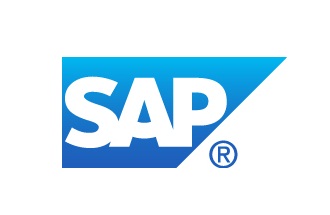SAP introduced new features to its business analytics software products that it says give users richer insights into how to make smarter business decisions based on an analysis of the mountain of “big data” their business operations generate.
The company unveiled new capabilities in feature pack 3 of the SAP Business Objects Business Intelligence 4.0 software suite. It also introduced the 1.0.1 release of SAP Visual Intelligence software, which it described as giving end users powerful analytics tools that are easy to use. The announcements were made on 17 July at the SAP Analytics Forum North America, held at the German company’s North American headquarters in Newtown Square, Pennsylvania.
Mobile BI
Added to feature pack 3 of Business Objects 4.0 is advanced support giving workers access to business intelligence (BI) analytics on mobile devices, including those running the Apple iOS and Google Android operating systems. Also new is support for the Apache Hadoop open source platform for analysing big data volumes to mine business intelligence and deeper support of the SAP HANA implementation of in-memory database technology.
 The SAP Explorer application provides visualisation tools to provide a clearer understanding to end users of the insights that can be gleaned from BI. The upgrade also improves integration with SAP’s StreamWork social application for improving collaboration among employees on a BI project.
The SAP Explorer application provides visualisation tools to provide a clearer understanding to end users of the insights that can be gleaned from BI. The upgrade also improves integration with SAP’s StreamWork social application for improving collaboration among employees on a BI project.
Lastly, the service pack 3 improves integration with other SAP software platforms such as its ERP (Enterprise Resource Planning) products.
“While we talk a lot about the data and the impact of that data, at the end of the day … analytics is about giving people information so that those people can have an impact on the success of an organisation,” said Adam Binnie, global vice president and general manager of the Business Intelligence Solutions division at SAP.
SAP said its software strategy is based on four key pillars of innovation: That data exploration, visualisation, reporting, sharing and more are essential for organisations to understand how they are performing; that easy-to-use and self-service connectivity to BI tools help users gain deeper insights into data; that delivering business analytics to workers on any device at any location is becoming more important; and that collaboration on BI projects among workers in an enterprise social environment is also being widely embraced.
Largest market share
Gartner research released in April shows that SAP holds the largest market share of any vendor in the business intelligence and analytics space, with a 23.6 percent share in 2011, based on a 19.5 percent increase in revenue over 2010.
The market share rankings of its nearest competitors are as follows: Oracle, 15.6 percent, SAS Institute, 12.6 percent, IBM, 12.1 percent and Microsoft, 8.7 percent. Overall sales in the sector rose by 16.4 percent from 2010 to $12.2 billion (£7.8bn) in 2011.
Adoption of business intelligence software is growing within businesses, but is still relatively modest, said Howard Dresner, founder of Dresner Advisory Services, who presented his Third Annual Wisdom of the Crowds Business Intelligence Market Study at the SAP event.
While use of BI software is most common within IT, sales and marketing and finance departments at companies, Dresner sees increased adoption outside of those typical users.
“This year there was a shift in favor of other business functions so we’re seeing a broadening of business intelligence deployment within organisations,” he said, citing increased adoption in supply chain management departments and among top executives, for example.
Dresner also shared information from Nucleus Research that for every $1 a company spends on BI software, they earn an average of $10.66, or a return on investment of more than 1,000 percent.
Do you know the secrets of Wi-Fi? Take our quiz.





